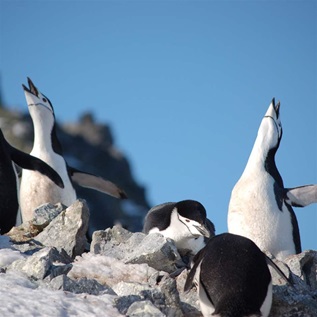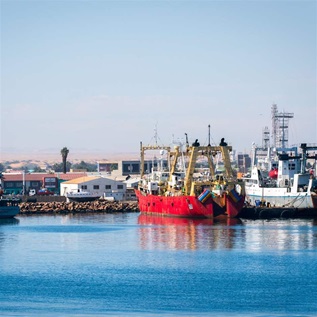Threatened Sharks Listed under UN Migratory Species Convention
Countries agree mako, spiny dogfish and porbeagle sharks need international attention
The Shark Alliance is heralding today’s ground-breaking agreement by more than 80 governments to list mako, spiny dogfish and porbeagle sharks under the Convention on Migratory Species of Wild Animals (CMS). The action is aimed at sparking the international collaboration needed to conserve populations of these wide-ranging, globally threatened sharks.
Proposals to list all the world’s populations of spiny dogfish and porbeagle sharks were developed by Belgium and advanced by the European Union (EU); Croatia proposed listing of both species of mako sharks. New Zealand, Chile and Argentina initially opposed the shark proposals. After much discussion of available information, Parties agreed to list all populations of makos and porbeagles, but only Northern hemisphere populations of spiny dogfish. Most species listed under CMS, such as bats, flamingos and dolphins, as well as basking, great white and whale sharks, are not commercially important like the shark species listed today.
“Listing commercially valuable makos, spiny dogfish and porbeagles under the Convention on Migratory Species marks an important step toward expanding the tools we use to ensure shark fishing is sustainable,” said Sonja Fordham, Policy Director for the Shark Alliance. “Most sharks grow slowly, give birth to live young after lengthy pregnancies, and play important roles in marine ecosystems. It is high time they were viewed not only as commodities but also as wildlife -- deserving of attention through wildlife treaties.”
The shark species at issue are exposed to intense fishing pressure as they migrate across national boundaries and yet are not subject to international catch limits. Shortfin mako, spiny dogfish and porbeagles are among the sharks most highly prized in Europe for their meat; their fins are exported to Asia for shark fin soup. Some populations have been seriously overfished, particularly in the North Atlantic. The EU loosely regulates fishing for spiny dogfish and porbeagle and is considering dramatic quota cuts; there are no EU limits on mako shark catch.
The shark listings come under CMS Appendix II based on “unfavorable” conservation status and potential to benefit from international cooperation. Appendix II listings can elevate management priority and promote collaborative conservation initiatives throughout species’ ranges.
“We urge all countries to fulfill the intent of the listings by prioritizing the management of these imperiled shark species and actively pursuing bilateral and regional conservation agreements that include science-based limits on fishing,” added Fordham.
Many CMS conference participants will stay on in Rome for a weekend meeting to develop a landmark CMS global conservation instrument for migratory sharks.
For more information, media interviews or B roll:
Mona Samari: Tel: +44 (0) 7515 828 939,
email: [email protected]
Notes to editors
- The Shark Alliance is coalition of 61 conservation, scientific and recreational organisations dedicated to improving European policies with respect to sharks and rays.
- CMS is an intergovernmental treaty formed under the United Nations Environment Programme. CMS currently has 109 Parties.
- CMS acts as a framework convention from which conservation instruments evolve. Agreements range from legally binding treaties to Memoranda of Understanding, and can be adapted to particular regions. Countries do not need to be CMS Parties to sign up to CMS conservation agreements.
- The CMS Parties agreed to revisit the Appendix II listing of Southern hemisphere spiny dogfish populations at the next Conference of the Parties in three years, after more data are collected.
- CMS Appendix I includes highly endangered species and mandates strict protection.
- Spiny dogfish and porbeagle are among the most severely overfished sharks in Europe; both species are classified by the International Union for Conservation of Nature (IUCN) as Critically Endangered in the Northeast Atlantic. Scientists have repeatedly recommended that EU fisheries for these species cease.
- Last month, the European Commission proposed slashing EU fishing quotas for spiny dogfish and porbeagle to zero in 2009. EU Fisheries Ministers will decide final 2009 fishing limits December 17-19.
- Both shortfin and longfin mako sharks are categorized by IUCN as Vulnerable to extinction on a global scale. Scientists recently determined that these two species are at exceptionally high risk for overfishing from high seas longline fisheries. (see www.lenfestocean.org).
- Chile, Uruguay and Ecuador made special statements for the record asserting that problems for makos in their regions have not been documented. Chile, Uruguay and Argentina made special statements asserting that problems for porbeagle in their regions have not been documented.
- Norway announced its belief that porbeagle sharks do not meet the criteria for a global listing, but agreed to the porbeagle listing for the sake of consensus and to avoid a vote.
- Denmark, as part of the EU, supported the porbeagle and spiny dogfish listings, but objected on behalf of the Faroe Islands, which are part of the Kingdom of Denmark, but not part of the EU.
- The CMS meeting to develop a global conservation instrument for sharks runs from Saturday through Monday in Rome.









